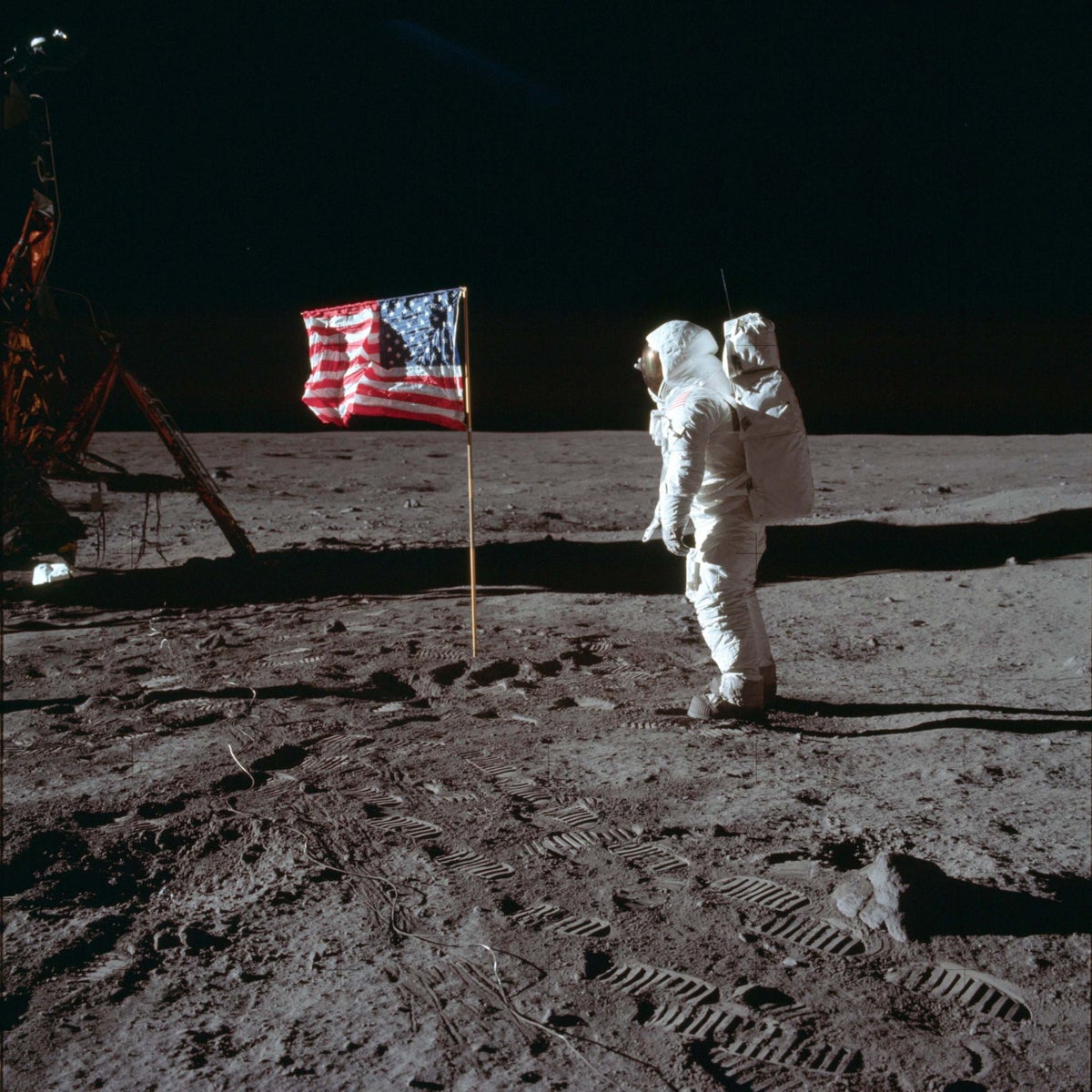Moon landing anniversary: When did Apollo 11 land, what happened and conspiracies

Many are likely to be familiar with the quote: “That’s one small step for man, one giant leap for mankind”.
This Thursday, July 20 marks the 54th anniversary of the Apollo 11 moon landing, which saw millions of people around the world tuning into their TVs to watch the historic moment.
The mission was believed to be “impossible” at the time, with much doubt cast over the rocket, equipment, and astronauts’ abilities.
If you fancy learning more, Apollo 10 ½ is now streaming on Netflix — a semi-autobiographical animation by Richard Linklater, which explores growing up in the 1960s, with humankind on the verge of landing on the moon.
When did Apollo 11 land on the moon and what happened?
On Monday, July 21, 1969, at 3.56am (GMT), Neil Armstrong stepped on to the surface of the moon for the very first time. However, the Lunar Module landed on the moon several hours prior, at 9.17pm on Sunday, July 20, 1969.
It was a feat that had been planned for years prior to the mission, down to the minute, but still saw the astronauts face a host of obstacles along the way until they eventually landed successfully.
The team aboard Apollo 11 remained in constant contact with Mission control and the command module.
Just minutes before landing, at 9.10pm, a ‘1202 programme alarm’ was triggered four times. The mission continued despite the risks and the Eagle Lunar module landed safely.
It was then that the famous words “the Eagle has landed” were uttered by Armstrong.
While he stepped out onto the moon’s surface at 2.56am, it wasn’t until 3.15am that Buzz Aldrin followed suit, with the pair reportedly spending two hours outside on the moon.
They were believed to have taken photographs and collected 21.5kg of lunar material for testing back on Earth. The video recording was transmitted back to Mission Control, with around 530 million watching the moment on television.
Who was on the Apollo 11 mission?
The three crew members of the Apollo 11 mission were Commander Neil Armstrong, Command Module Pilot Michael Collins, and Lunar Module Pilot Edwin “Buzz” Aldrin.
Armstrong was the astronaut behind the “One small step for man” quote, while Aldrin captured the photo of the space boot imprint on the moon — as part of a study of the nature of the soil on its surface.
How long did it take Apollo 11 to reach the moon and when did the astronauts return to Earth?
It took Apollo 11 and its astronauts four days, six hours, and 45 minutes to reach the moon.
The mission initially aimed to send a three-person crew to orbit the moon, rather than landing on the surface.
The astronauts scraped making it to the moon’s surface as they were 23 seconds away from fuel levels being too low to complete the mission.
It wasn’t until July 24, 1969, that the astronauts returned back to Earth, with the Eagle beginning its ascent back to the command module on July 21, 1969, before docking and rejoining Apollo 11.
On July 22, 1969, Apollo 11 began its journey back to Earth, before safely landing in the Pacific Ocean just two days later.
What conspiracy theories are there surrounding the moon landing?
Thousands of people around the world believe that the moon landings were faked and that the Apollo 11 mission never happened.
These conspiracy theories have been debunked many times, with evidence and scientific explanations.
Some believe the shadows in the moon landing photos prove the images were faked, but this has been disproved with simple explanations surrounding how shadows and photography work.
Another theory claims the lack of stars in the photos means they couldn’t have possibly been on the moon, but the Royal Museums Greenwich website states why this is the case.
It states: “Here’s another solution: both the astronauts and the lunar landscape itself are brightly lit by the Sun. The sky may look black, but remember, this is in fact daytime on the Moon.
“If you’re going to take a photo of a brightly lit scene, your camera’s shutter speed needs to be fast and your aperture incredibly small. In that situation, faint objects like stars simply aren’t going to show up.”
And many wonder why no-one has been back to the moon since the last Apollo mission in 1972, given technology has progressed so much. However, this was revealed to be down to a change in priorities, with a focus on the Space Shuttle programme and the International Space Station instead.


